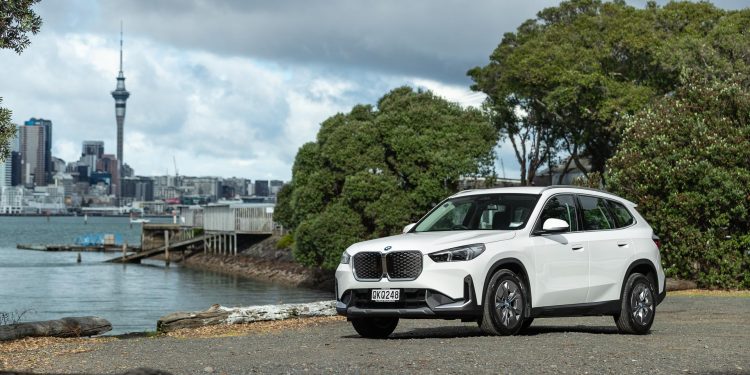2024 BMW iX1 eDrive20 review
Words: Kyle Cassidy | Photos: Isaac Western
BMW’s entry-level X machine goes well enough for us and it’s even better when you replace the engine with an EV powertrain.
BMW’s line-up of X machines keeps growing, the models getting bigger, the number offered more prolific. As happens with the more upmarket brands, buyers gravitate toward the larger models.
Yet those at the entry level shouldn’t be overlooked. The X1 is a case in point; do you need something as large as the X5 to run your child to ballet?
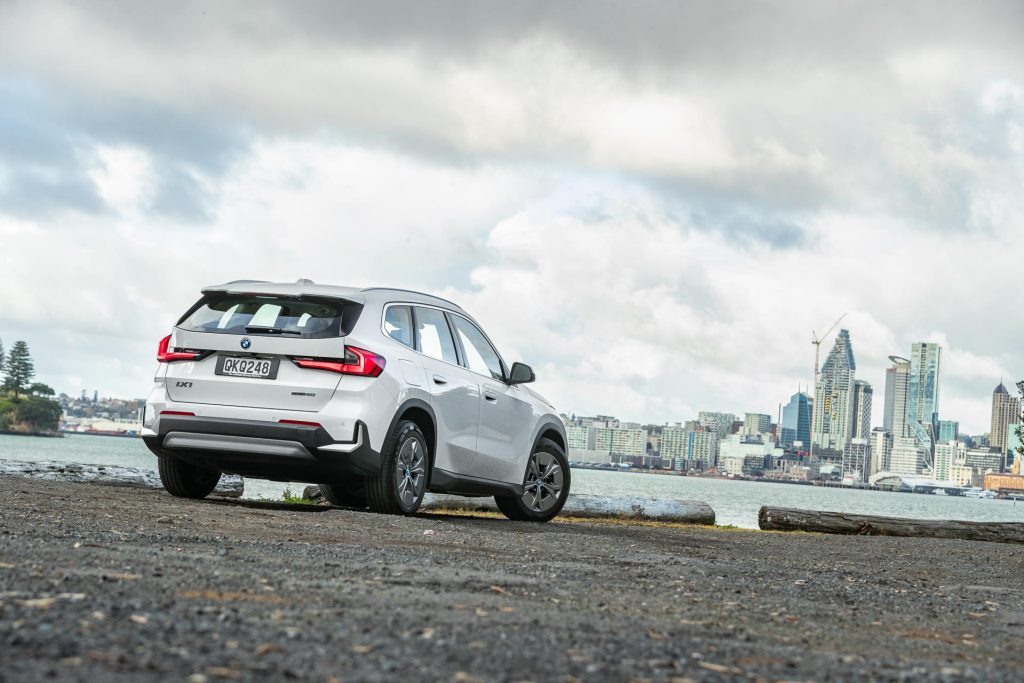
If your X3 is up for replacement, and the look of the new one doesn’t do it for you, don’t turn your nose up at the X1.
Especially when the times dictate even premium buyers need to be more money conscious.
We liked the X1 in base ICE form, while recently we found the entry-level electric variant, the 20e, had enough to satisfy too.
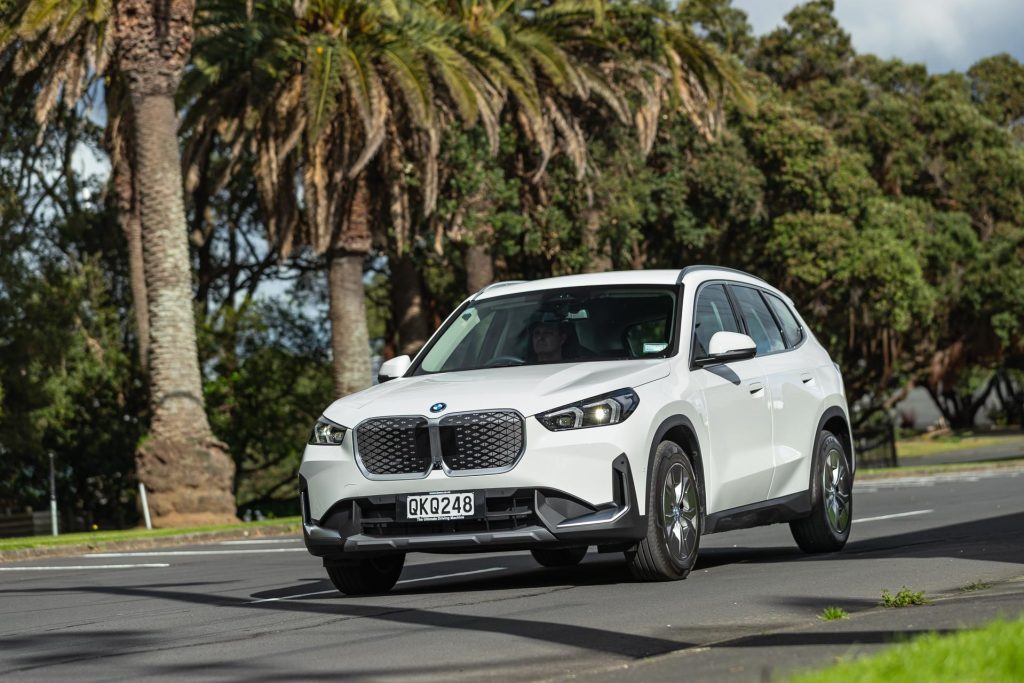
Premium to go electric
As is the case, the EV asks more up front. Where the sDrive18i is $72,400, the eDrive20 is $86,900. So not exactly cheap, especially compared with the likes of the $59,990 VW ID.4 but it’s a BMW, after all.
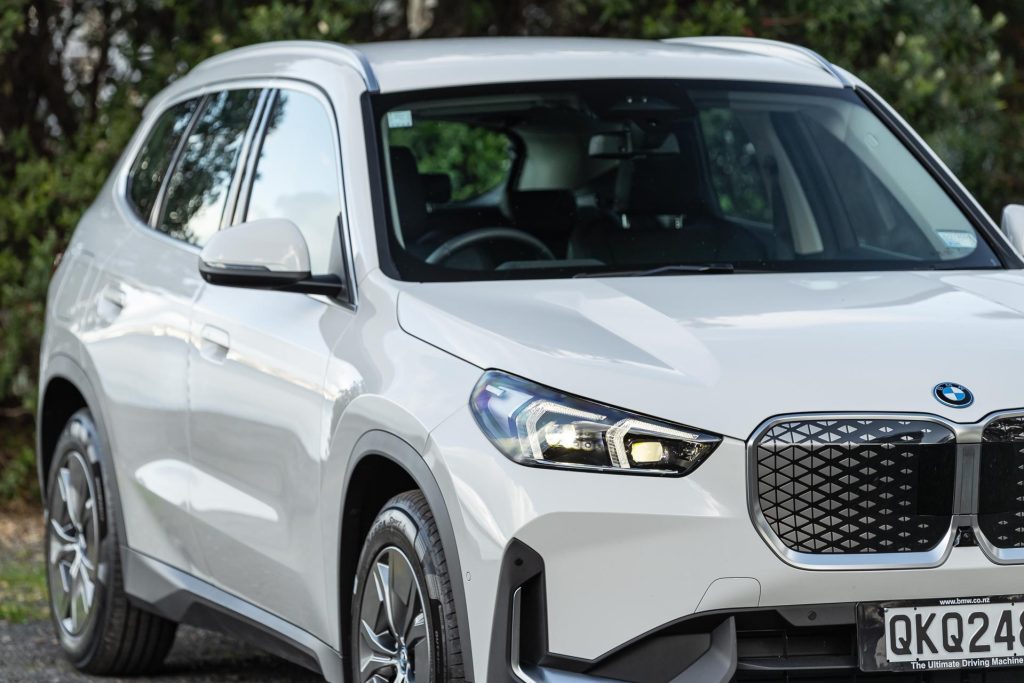
Compared with the $98,900, 230kW dual-motor xDrive30e we drove a few months back, this has a single 150kW motor on the front axle with a claimed range of up to 460km from its 64.8kWh battery pack.
So this goes a little further (+30km) between charges, the extra money asked for the 30e paying for added items on the spec list, and the additional motor and power.
But the way this eDrive20 goes will be fine for most needs. BMW states efficiency at 15.7kWh/100km which we found achievable, and confirmed by the long term figure for this tester; 16.1kWh/100km.
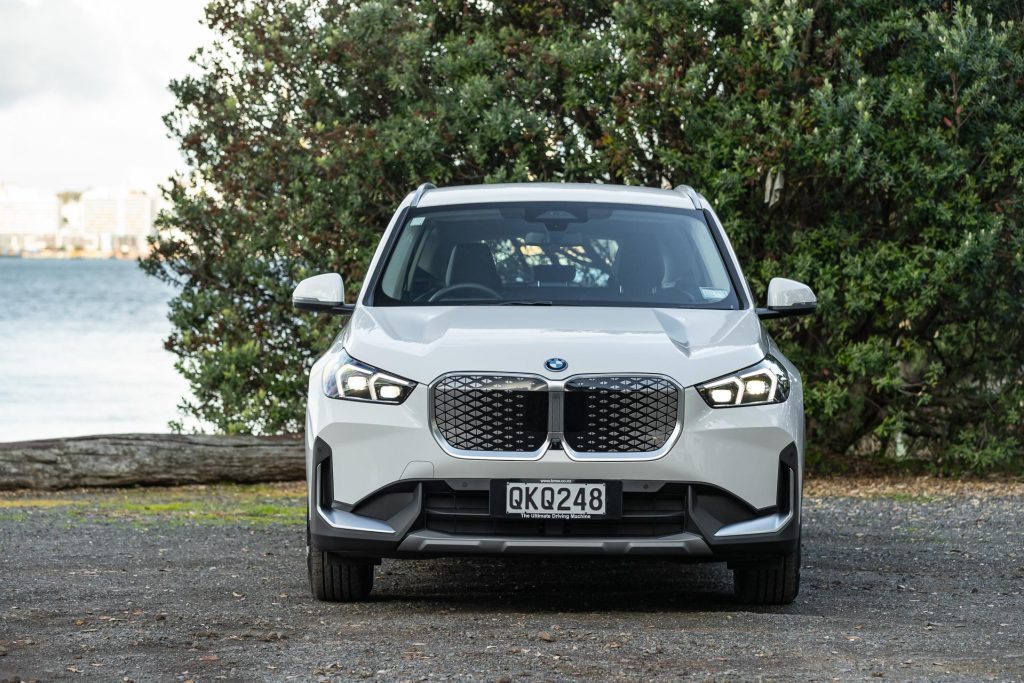
As to the charging stats, it can take up to 130kW DC (29mins 10-80 per cent the claim) and 11kW of AC (6.5hrs 0-100 per cent with the appropriate wallbox). We added 17kWh in 18min at a 75kW pump, topping the DTE up by 112km.
Replete on spec
Unfortunately BMW is following Tesla’s lead on charging for paint, anything other than white being a cost extra.
But otherwise this is outfitted with most things you’d deem necessary, including all of BMW’s Connected Services you never use.
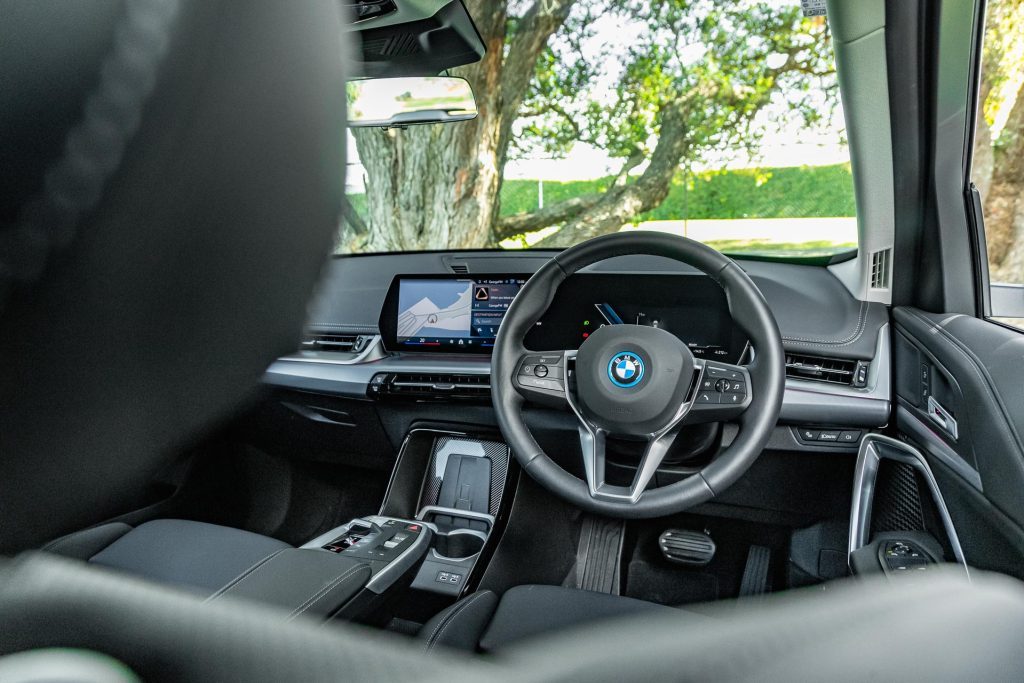
There’s also Alexa, Android Auto and CarPlay. The button count is minimal, the touchscreen used for most functions. This isn’t the type that dominates the dashboard but is big enough to be useful with good touch points and solid resolution.
However, it does take a moment too long to respond to each touch. We say get used to using the voice assistant, a tech that gets smarter each time we encounter it thanks to constant updates.
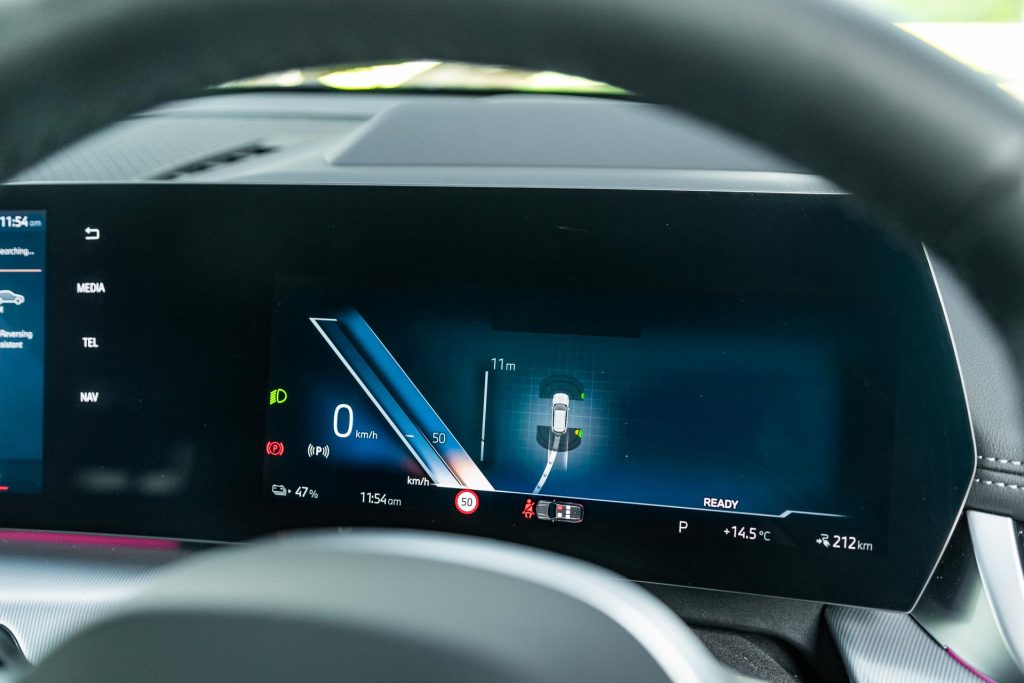
We like the clumping of the start button, gear selector and park brake all in the one handy location on the high-set console. The upright charge pad with its device holder is well located too, as are the beverage receptacles.
This cabin is well thought out, with just enough storage, although the lid of the centre console box opens the wrong way for right hand drive.
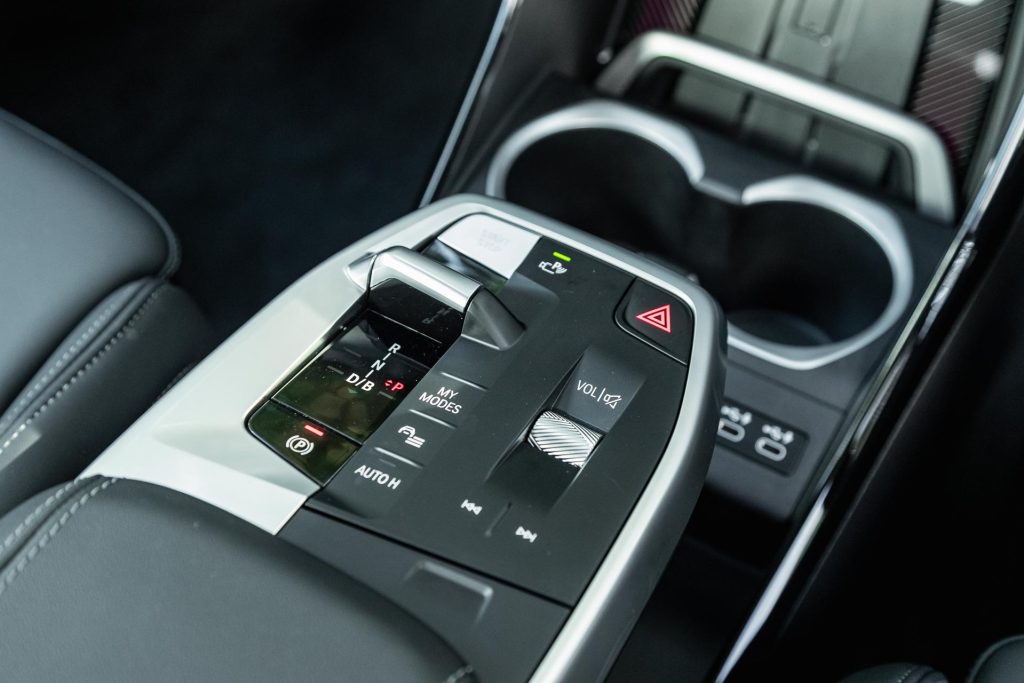
Enough space
You’ll find suitable room in the rear for a pair of adults, or else three young ones can pack in just fine. In behind, the boot area is practically proportioned, with enough space for the nuclear family’s guff and groceries.
There’s some extra storage under the floor, not much but the seat back is split 40/20/40 adding some versatility when toting bigger loads.
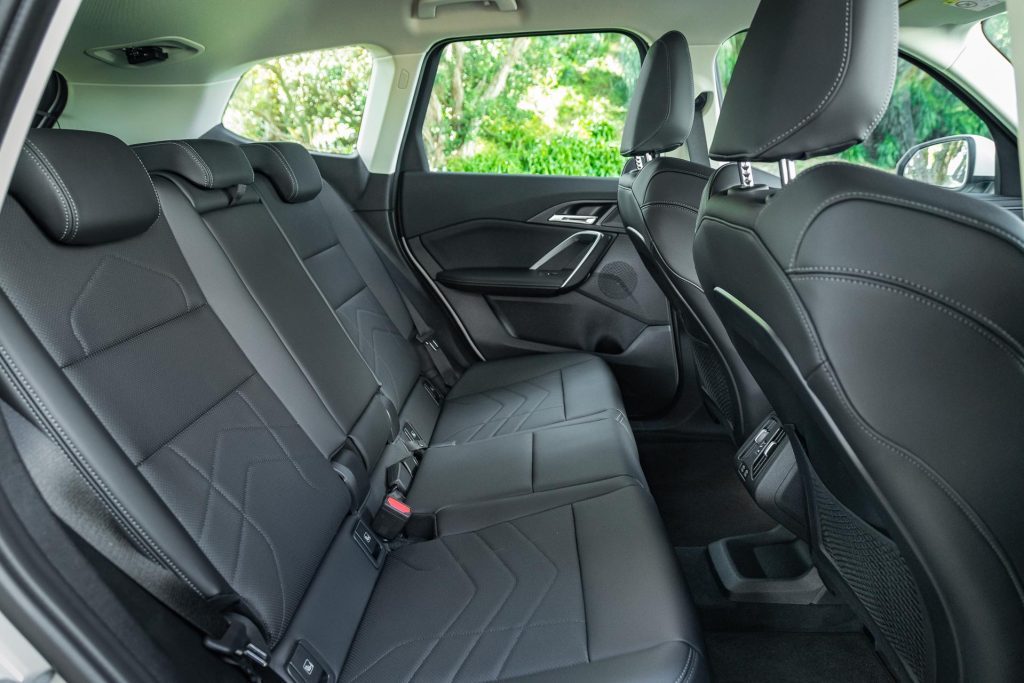
The driver’s seat is well formed, the driving position sound, even if this model makes do with manual adjustment, and lacks for heating elements (unless we missed the button buried in the touchscreen sub-menus somewhere).
While the X1 has a fair amount of plastic about the cabin, the upper parts of the interior have a leather-like material on display, which is stitched to give the right impression.
For those who think some of BMW’s designs are a bit out there, this is a little less in your face. This iX1 rolled on some funky aerodynamic alloys, and they’re not plastic covers either; that’s solid alloy there.
The other pointer that this X1 is an i member is the solid grille but otherwise it flies under the EV radar.
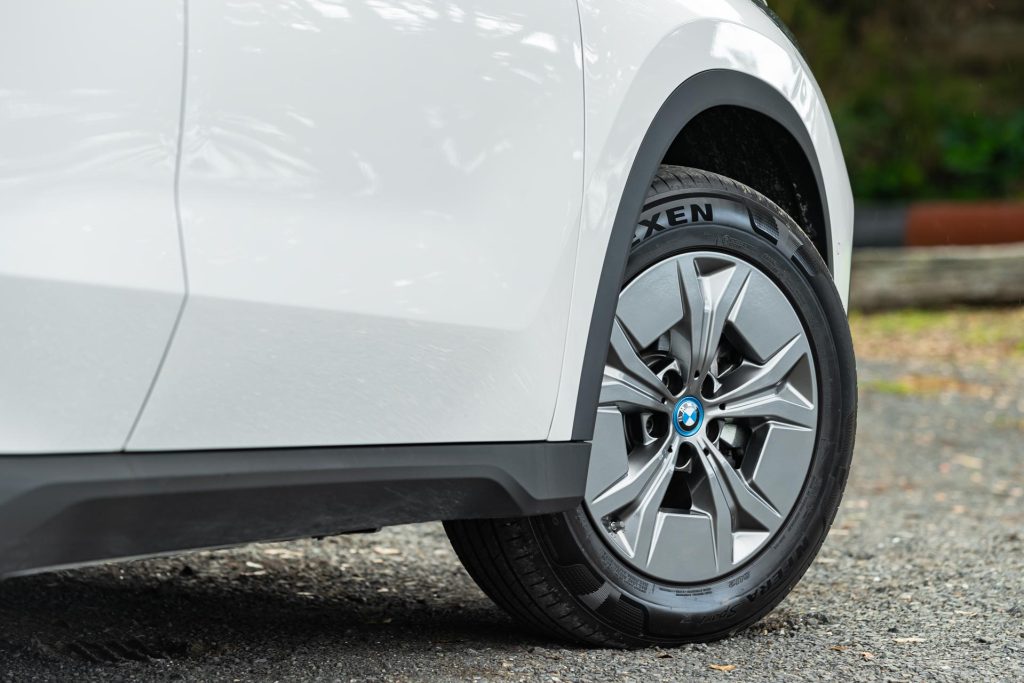
Drives well enough too
While 250Nm doesn’t seem like much, it’s enough to satisfy. It comes on quickly and despite the front wheels having to do the job of both traction and turning, BMW’s control of the former makes sure no Newts are wasted.
The TC is well versed at ensuring the tyres put down as much of the torque as they can. Even with the throttle pinned, this front driver tracks true around a bend, without a hint of wheel slip.
The ride is controlled in urban running. Some might find it tending firm but it’s compliant. The steering assistance is light, easy for commuting but also with a semblance of feel in corners.
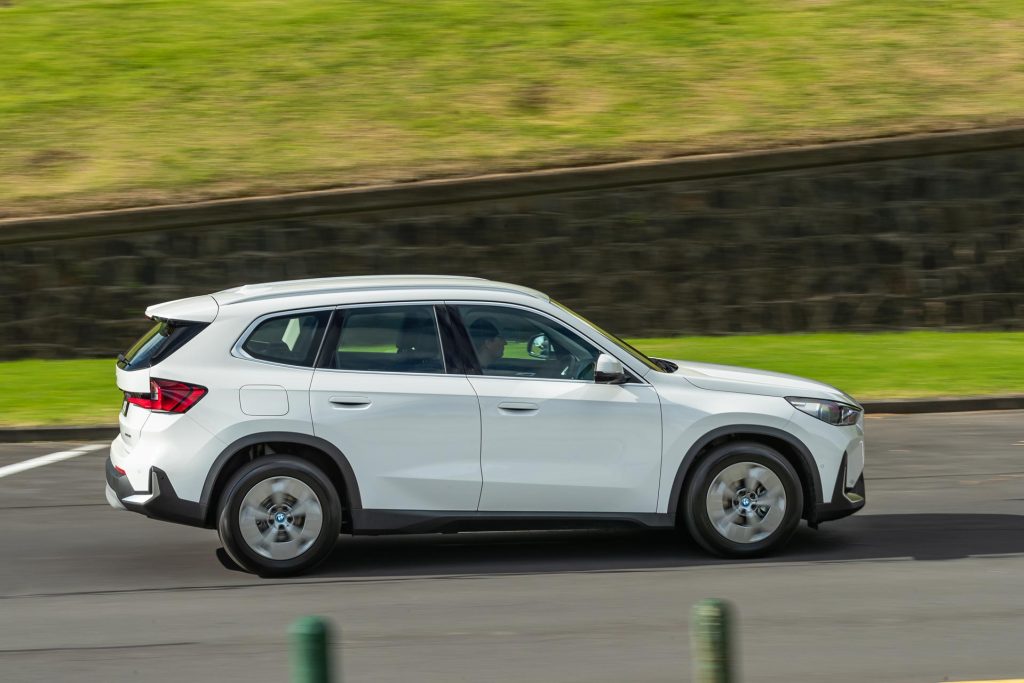
There’s also a sense of balance on the turn as it wards off understeer well enough. You might venture into the Sport mode, dials turning red and the throttle map sharpening.
Here the TC is asked to work harder but again it’s up to the task.
There are three strengths of brake regen, or flick to B via the gear selector to access a well programmed one-pedal drive mode that’ll slow you smoothly to a halt simply by lifting off the go pedal.
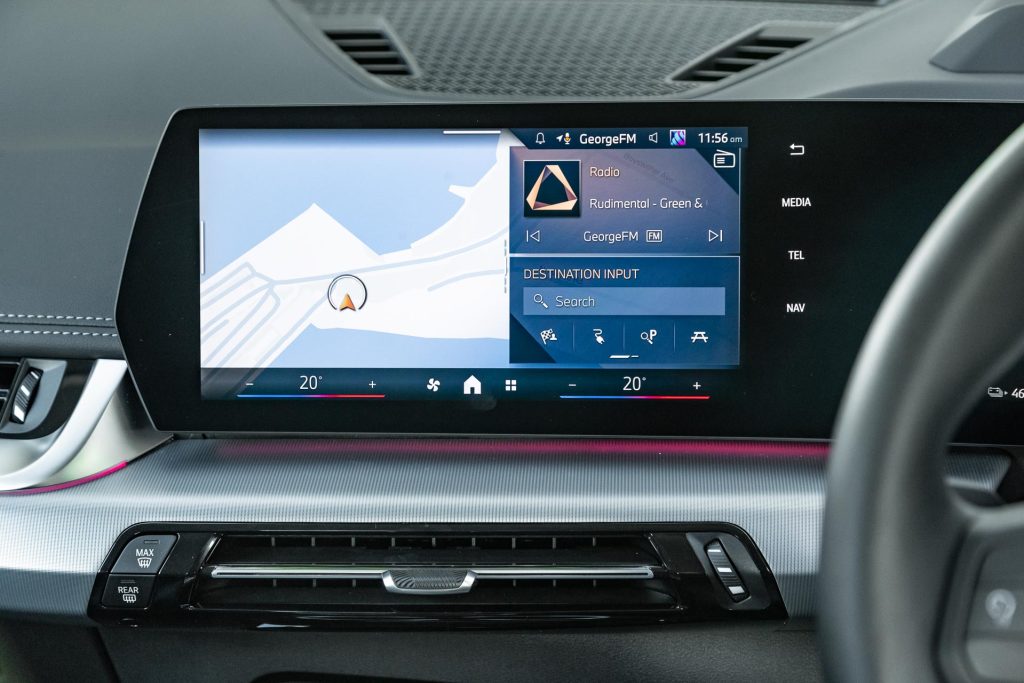
BMW’s well versed assisted drive function takes care of motorway cruising, maintaining your flow in the traffic and keeping you in the lane, the latter aspect well behaved.
But if you don’t like the car to steer by itself, you can revert to plain old adaptive cruise. Other handy driver aids include BMW’s reverse assistant, the car steering itself back out of tricky spots, while there is a good multi-view camera to help out there as well.
With compact dimensions and quick steering, it’s an easy-to-park SUV. It has a parking assistant, though you won’t be needing it.
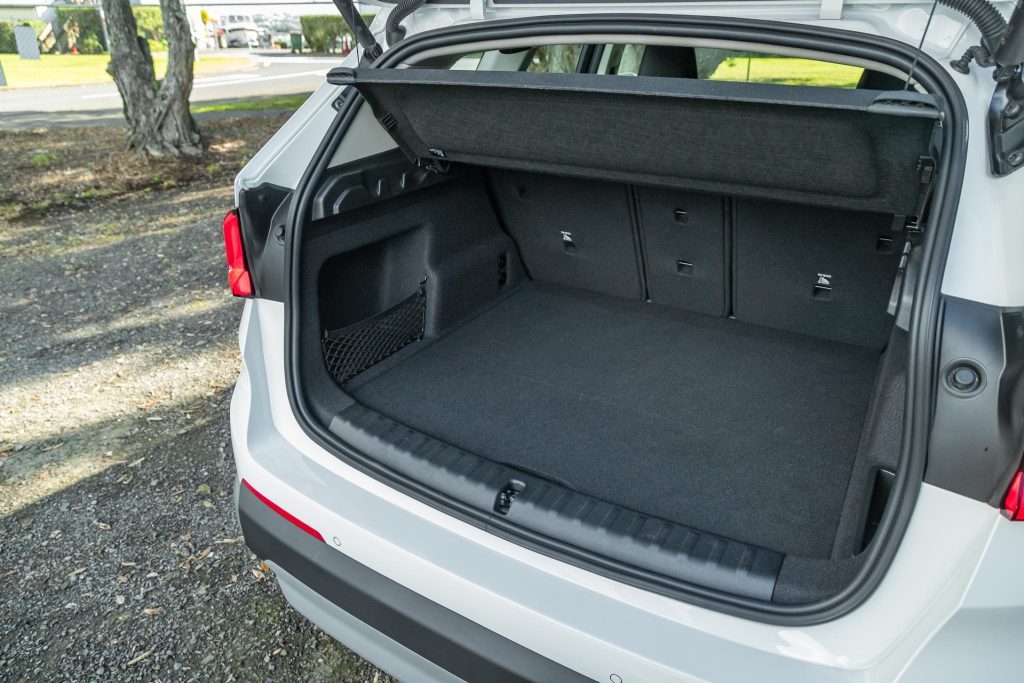
So enough then?
Those shopping across from the more mainstream market EVs will find the price too high but those wanting a bit of premium mixed in with their electric SUV will find this appealing.
Crucially it’s $13k cheaper than the Q4, which admittedly looks better, and drives from the rear.
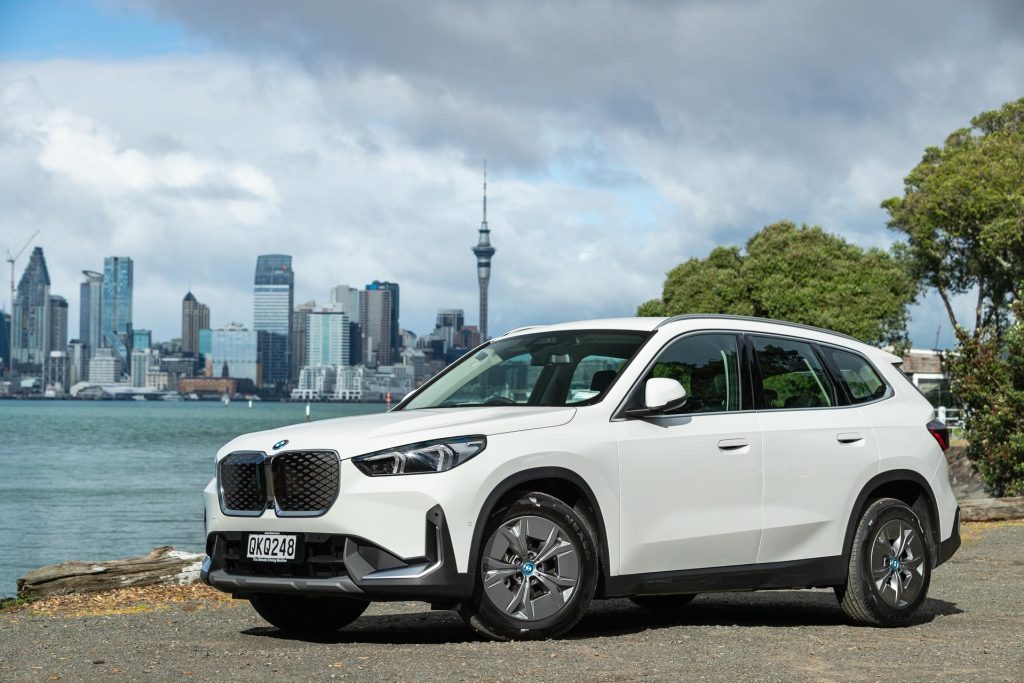
Meanwhile the Mercedes-Benz EQA has disappeared from the local M-B line up as it undergoes a mid-life renewal.
| Model | BMW iX1 eDrive20 |
| Price | $86,900 |
| Motor | 150kW, 250Nm |
| Battery | 64.8kWh net |
| Range | 466km |
| Drivetrain | single-speed auto, FWD |
| Energy Use | 15.7kWh/100km |
| C02 Output | 0g/km |
| 0-100km/h | 8.6 sec (claimed) |
| Stability systems | ABS, ESP, TV |
| Safety | AEB, ACC, BSM, LDW, ALK |
| Luggage capacity | 490-1495L |
| Tow rating | 750kg braked |
| Service intervals | Variable |
| Warranty | 5 yrs, 100,000km |
| ANCAP rating | 5 Stars (2022) |
| Weight | 1940kg (claimed) |
This story first appeared in the August 2024 issue of NZ Autocar magazine.


